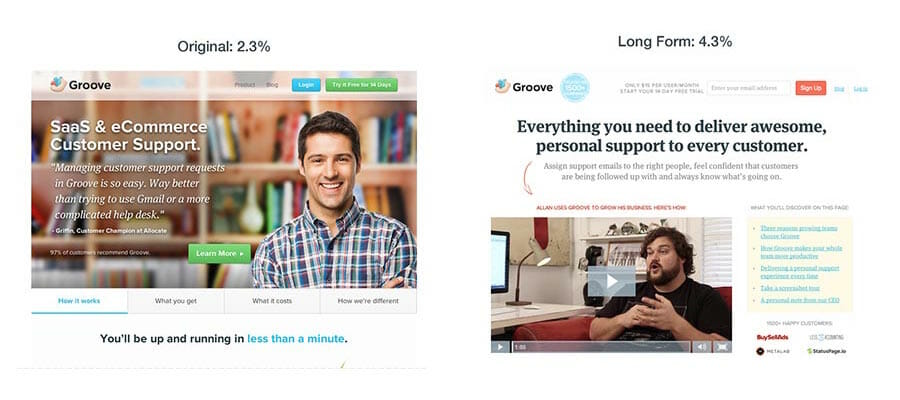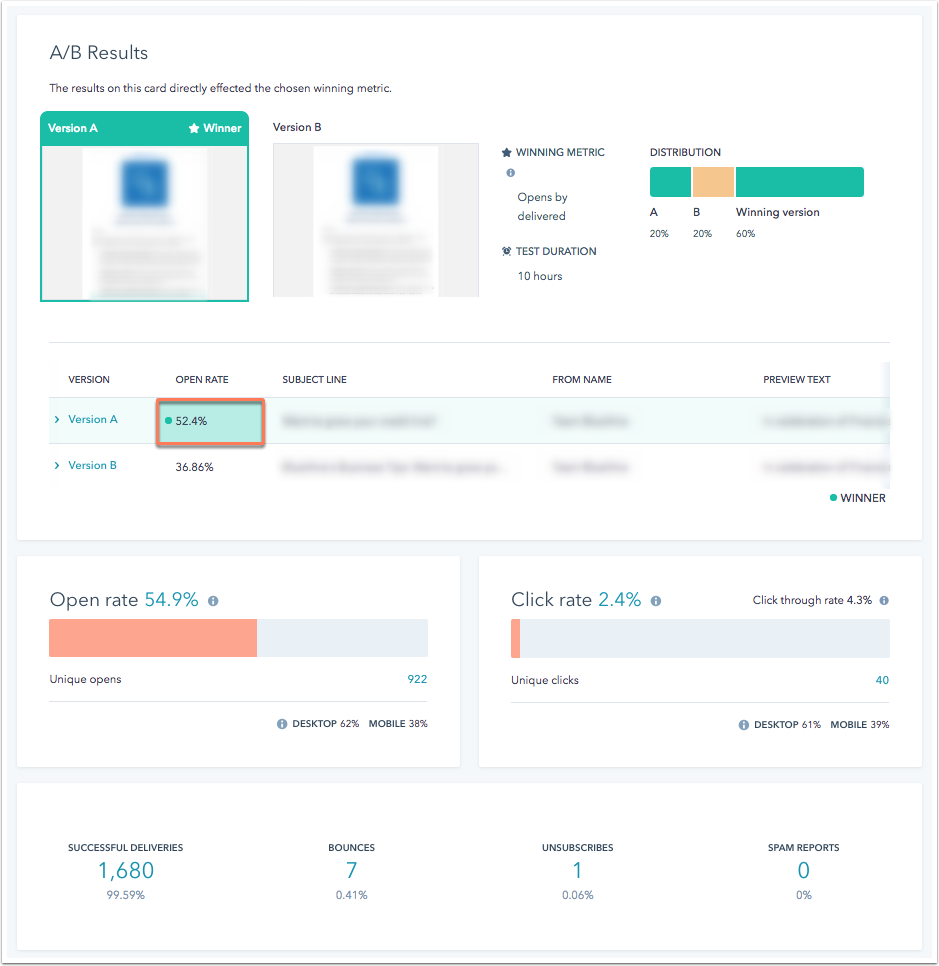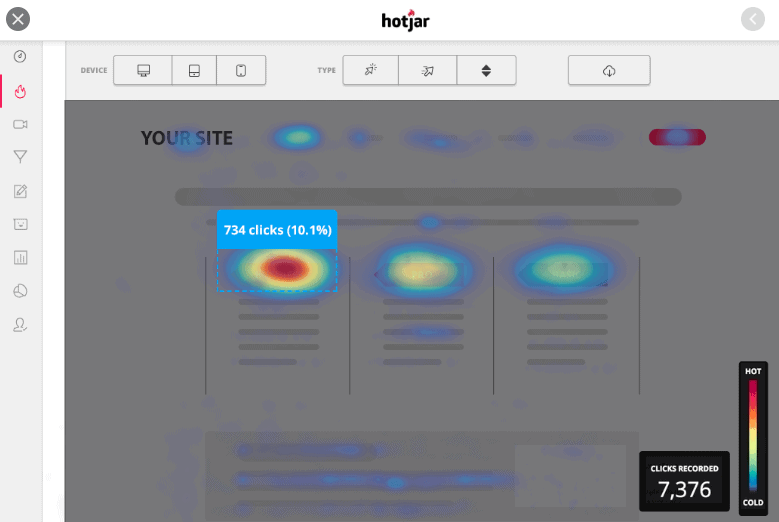The key to becoming a well-oiled marketing machine is to always be testing. Very seldomly does your first iteration of a piece of creative or landing page for a campaign generates your desired outcome. That being a lead being generated or a revenue conversion.
So how do marketers test to get to their desired outcome? They use a process called conversion rate optimization. A key component of conversion rate optimization is a concept called A/B testing or split testing.
In this article, we will cover what conversion rate optimization is, how A/B testing works, and introduce some tools that you can use for A/B testing and conversion rate optimization.
Introduction to Conversion Rate Optimization and A/B Testing
What is Conversion Rate Optimization?
Conversion rate optimization (CRO) is the process of improving an element of a marketing campaign to help drive more people to take the desired campaign action.
CRO is usually implemented on marketing elements like email templates, email subject lines, website & landing page designs, and campaign strategies.
You can think of conversion rate optimization as a science project. You hypothesize that changing or removing a certain element will help improve the overall conversion rate.
For the elements, you’re testing you can consider the variables.
See below for an example of this concept.
Hypothesis: If I put my landing page form higher up on the landing page, in the section above the fold, I will generate 25% more lead signups.
Variable: Moving the landing page form to the section above the fold.

What is A/B Testing?
An A/B test (also known as split testing) is a strategy within conversion rate optimization that pits one variable against the control to measure performance against a hypothesis.
You most commonly see split testing occurring in creative work like website copy, and email or website design.
An example of an AB test would be:
Hypothesis: If I used first name personalization in my subject line for my product email, I will generate 25% more opens than my normal subject line.
Control: Take Advantage of Our Flash Sale That Starts Tomorrow!
Variable: John, Take Advantage of Our Flash Sale That Starts Tomorrow!
Why You Should A/B Test when performing Conversion Rate Optimization?
The Data Generated from A/B Testing Doesn’t Lie
For an experiment to have any validity, you need to make a conclusion based on the data generated through the experiment. The same goes for A/B testing in marketing.
The issue, especially with people outside of marketing like a CEO or salesperson, is usually they make suggestions based on things they saw on their own like their own social media accounts, and think it can be worth it for your business and should be implemented.
That is a great way to waste marketing dollars and time. Potential alterations to campaigns need to be introduced at a smaller scale and then built up based on the results generated.
When implementing changes during conversion rate optimization and AB testing variants, the data that you generate will tell you all you need to know whether to proceed with a change or not.
Statistical Significance
One thing to note is that you have to make sure your test results are statistically significant. You need to have an adequate sample size or test group that accurately represents everyone that interacts with whatever you are testing.
A subject line test conducted with emails only sent to 10 individuals won’t yield a statistically relevant test. The idea is that you want to have a proper mix of different people and personal interests.
There are many online calculators that can walk you through how to calculate statistical significance.
After conducting your test, if you tabulate your results and see a change in a campaign that brought in 100 leads versus the control that generated 99 leads, that is not enough to conclude that the test performed better.
Typically, you want to have a plus or minus 10 percentage points from the control for a variable to be concluded to have performed better. Within 10 deviation percentage points, that might be enough merit for a retest or to change the variable again.
Accuracy in Testing Conditions
The benefit of A/B testing is that it’s a sterile testing environment. Since you’re testing only one variable at a time, you won’t have any issue concluding that factors outside the actual test had a role in skewing the results.
For example, if you’re looking to test whether a form on a landing page will drive more conversions above the fold than below the fold, you should probably pick one medium like traffic generated from your Facebook paid media campaign to test from.
Let’s say if you perform that same test using people generated from an email campaign, you won’t have to worry about if a social media post they saw and clicked on was more engaging than the email you generated. All you would care about is how many people converted on the different landing pages generated from the single email you sent out.
You Won’t Lose Results Through Split Testing
Another positive outcome of split testing is that you will always have your control available to revert to if a test begins to go south.
For example, if you a running a test on social media on different banner ad variations to see which style will drive more conversions, and your control historically runs well but you’re testing to see how you can improve it, you won’t necessarily lose your all of your conversion results because you’ll have your control siloed separately from your variable tests.
If your variables perform well below average, you can cut the test short and deem the control the winner and send 100% of your test audience to it, to restore your conversions.
Tools for Conversion Rate Optimization and AB Testing
Email Marketing Platforms

Most email marketing platforms have built-in capabilities for A/B testing. You can create different variations of subject lines and email templates.
You can’t go wrong with picking an email platform that has a great split testing tool as it plays such a major role in email marketing, but Hubspot probably has the most user-friendly interface for email testing.
They make adding subject lines very easy. They also have in my opinion the best tools available for assessing how well your email creative performs.
One feature that separates Hubspot from the rest is its email “heatmap”.
I wouldn’t consider this to be 100% accurate but it takes the number of clicks from certain sections of your email and color codes these sections based on popularity, green for the most favorable sections and red for the unfavorable ones. This can tell you, where your email recipients are heading first when viewing your email.
This can aid your A/B test because you can change up the section hierarchy and see if you can produce the most optimal email template for user experience.
Landing Page Builders

Several dedicated landing page builders are great for AB testing.
The first that comes to mind is Unbounce. Unbounce is great because it allows you to split tests across more than two variations. You can also route various amounts of traffic to different variations of your landing page.
For example, if you wanted to send 20% of normal traffic to your control, and 40% to two variations of the landing page you’re testing, you could Unbounce.
The only problem with using Unbounce is that the AB testing feature is only available on their more premium plans instead of their introductory plan.
The other tool that is very popular for AB testing is Instapage. It offers pretty much the same features as Unbounce but is more expensive than Instapage. Instapage has more of a user-friendly interface in comparison to that Unbounce.
Heatmaps & User Session Recorders

Suppose you’re a website developer using platforms like WordPress or Webflow to build your websites or landing pages. In that case, you’ll need an external tool to aid you with your conversion rate optimization efforts. Luckily, there are free tools you can use to help you in your efforts.
Google Optimize
Google Optimize is a free AB testing tool by Google. It connects to your website and allows you to make contextual changes without having to go into your website editor and create a new variation.
You’re able to create tests and generate multiple variations of a single landing page or website page.
The only issue with this tool is that it can slow down your website if you implement the Google Optimize tag using Google Tag Manager. You should be alright if you hard-code the GO tag into your website.
Microsoft Clarity
Microsoft Clarity is a heatmap and session recording tool that allows you to see how people are interacting with your website. The best part about Microsoft Clarity is that it is free of charge. All you need to do is signup for a Microsoft account, install the code to your site and you’re off to the races.
Just like Google Optimize, you may experience slowness to your website when using Microsoft clarity so keep that in mind when running tests.
Lucky Orange
Lucky Orange is another session recording and heatmap tool that I’ve recently discovered. The tool is pretty solid but it does have some bugs. The free version of the tool is very generous. If you’re a brand new website that is growing in traffic, I definitely would recommend giving Lucky Orange a try.
Inspectlet & Hotjar
Inspectlet and Hotjar are two of the most popular heatmap tools on the market. If you’re looking to sell some dollars on a premium tool, I recommend trying out either of these tools.
Conclusion
If you want to increase your output from your marketing campaigns, conversion rate optimization through A/B testing is a must. If you approach your tests like a science experiment by creating a hypothesis and testing one variable at a time, you will gain learnings that will increase your conversion rate and your desired outcomes will become that much more achievable.
About the Author
Andrew McMenamy
A natural problem solver with 6 + years of marketing experience building audiences across numerous verticals. Specialties include content, email, and performance marketing. Andrew graduated from Dowling College with a Bachelor’s in Business Administration in Marketing Management. Follow me on Linkedin and Quora.
